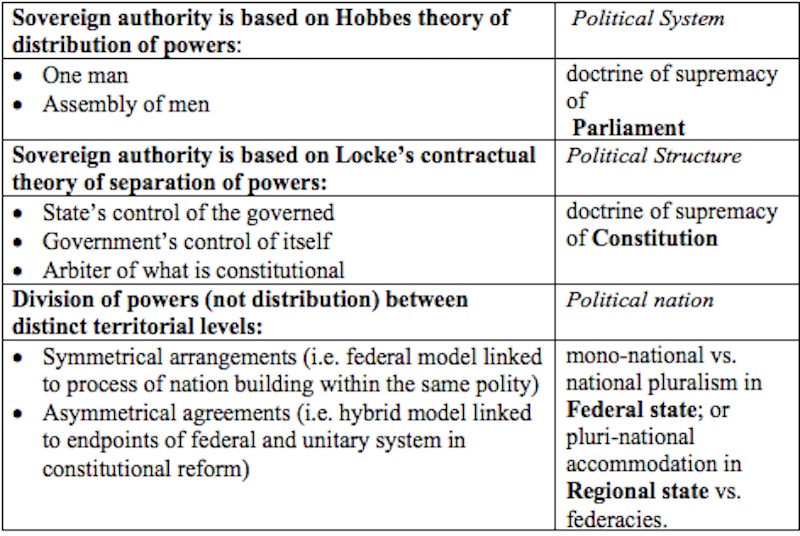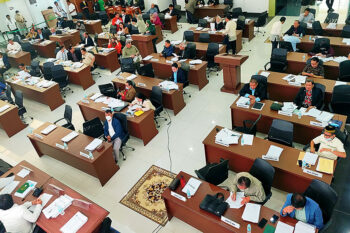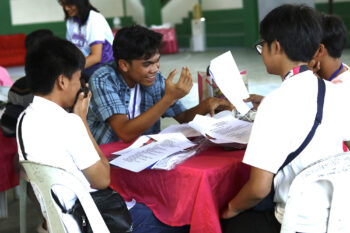(Presented by Datu Michael O. Mastura, lawyer and delegate to the 1971 Constitutional Convenion, and a former representative of Maguindanao, at the Learning Sessions on Charter Change and Federalism in the House of Representatives on May 16, 2018 and the Senate and House of Representatives May 17).
Why is autonomy in the 1987 Constitution inadequate to address the Mindanao problem? If basic law revision to the Organic Act is perceived as creation of a substate, hence unconstitutional, what are the options? Rejection of MOA-AD demonstrates how limited are institutions of autonomy or regional entity in Muslim Mindanao.
If ultimate power is in the Constitution, then a 21stcentury Filipino constitutional order must find foundations in the core-periphery model with a new definition of the republican state. If they are not given a “standing” (read: constitutional status) in the life of the country enabling them to affect the political foundation of the state, the “national question” would remain: How can they consider the state as their own? Mindanao citizen volunteers have crafted an alternative Bangsamoro State Constitution with federal perspectives.
The historicity of ethnicity in Mindanao and Sulu archipelago is a continuum of this vexed problem. Subnational entity representation is central to the process of amending the national constitution. Given the Spanish colonial origins of Philippine unitary national polity, there is disconnect between types of nationalism analysis as major concerns: the constituency status of citizens and historic communities of Moro ancestry.
The central point of my presentation is not an academic argument. In effect, it can be plotted as empirical trends and expressed graphically in a table done as follows:

From an understanding of the various types of constitution, federalism, an advocacy of multi-tiered government requires listed powers. These elements are incorporated in the Bangsamoro Basic Law, but under a unitary system they are ultimately “vulnerable to the overriding constitutional authority” of the central government. By combining elements of shared-rule and regional self-rule, Bangsamoro authorities would become constructs of a constitutionally protected ‘earned’ or ‘conditional’ or shared sovereignty in a federal and regional systems.
There’s no space to elaborate here. I barely want to mention in passing US ideal of “perfect union” and UK ideal bonds of “union state” as broad political consensus. Hybrid parliamentary State Constitution framed within a presidential Federal Constitution can evolve. In the light of deliberations at the Constitutional Commission and the Figure above, the most plausible option appears to be “asymmetrical pluralist-national federalism”.
It is important to recall that the Philippine Islands fell at first under the category of an “unincorporated territory” of the United States. At this stage, it was a union where recognition of a patrimonial Sultanate and, for a brief interregnum, the Moro Province was then established on a contrastiveapproach to sovereignty. In spite of its history, the founding document of “unicity” of a modernizing Philippine republic into an autonomous political community “bound together by citizenship and nationality” has yet felt vulnerable on entrenched issues.
A centralist economic policy was a child of the mercantilist Commonwealth era couched in Quezonian nationalist interpretation: a government “run-like hell” by Filipinos rather than one “run-like heaven” under Americans. No mechanism for subnational “exit” and “loyalty” as well to regulate the use of state residual power, however, had shaped the 1935 Constitution to protect the Muslim special provinces originally represented in the Senate. Any semblance of asymmetry of the administrative system was eroded by political gerrymandering by constitutional authoritarianism from 1972 to 1986.
I will give a hint on the draft Bangsamoro State Constitution: this project has taken us back to basic approach. The processes at work relate to the first stage that is asymmetrical. The commonwealth idea underlay “the doctrine of public trust” by which the grant of powers of eminent domain a public purpose is served. Crafting Bangsamoro constitutional provisions was tied to the patrimony clause and revenue sources. To trench the use of public utilities, water rights, riparian rights, or mining rights imbued with public interest is to justify federal restructuring of Bangsamoro juridical entity to govern the economy within its public domain.
From the standpoint of property vested rights, the commonwealth idea is typical of the necessity of restraints in exercise of police power as matters of expediency and its “reasonableness” to be determined by the legislature, not by the court. Listed exclusive powers and the limitation derived from Federal contract clause in restraint of trade can prove “unreasonableness”.
Conservative critics are blinded where the survival of a historic nationresisted assimilation or integration with the imperial center during the first century of the Republic. Yet “democratic deficit” in the constitutional order raises serious questions of citizenship and proportionate representation at the national level. It is most visibly manifested at the Senate and Supreme Court. Where majoritarian rule predominates in such branches of the Presidential system, no single Muslim represents their sense of belonging and the allegiance that goes with it.
A political discourse of cumulative impacts of fragmenting forces was matched by the rise of national liberation Moro fronts and the political economy of armed struggle and conflict in the periods between 1970s and the first decade of 2000. A turning point was regionalization in the 1973 Constitution which was a contemporary phase more explicitly intergovernmental. A new Local Government Code adopted an incremental strategy. There was deeper reason for the autonomous regions introduced in the 1987 Constitution. It is a failed response to Moro identity and aspiration lacking of a degree of consensus around asymmetries with a Bangsamoro dimension.
Briefly, we can argue that deficit democracy is also reflected in values that the unitary state makes achievable but are beyond the reach of multi-ethnic or pluri-ethnic states to include the indigenous peoples. Imposing a “monist” structure on pluralist society generates resistance to reality of the exercise of power.
Democratic deficit can likewise lead to loss of citizenship rights for the sake of “consumership” such as in common market.
But if the uses of union changed the definition of “one state” in the UK, it makes tractable in modern sense to shift between “unitary state” and “union state” for different constituencies. Legislating maximum degree of devolution for the core-periphery model within a non-federal system or quasi-federalism eschews the language of sovereignty for that of consensus and what is labeled contractualism.
- The useful political concept of “union state” system can flesh out a pluri-national skeleton of the Philippines within asymmetries of the federal system. A shift from majoritarian parliamentary system and what is termed “juridification” of politics in UK could bring about the transition of political constitution. It is said that the formation of the Union State has been completed by the political asymmetry of the devolution process in Scotland, Wales, and Northern Ireland.
- Judicial intervention of judges in political matters is in itself political because law forms an intrinsic part of politics. A corollary politics of law tends to follow American legal-constitutional history that focuses on the role of the Supreme Court in politics: constitutional doctrine and interpretation. The draft Bangsamoro State Constitution has introduced the Council of Judicial Performance with due regard to trial court unification, education and training. In practice, strict judicial review has evolved narrow interpretation of territorial integrity and sovereignty of the republican state. The challenge to the asymmetrical nature of the draft Bangsamoro Constitution calls for a Constitutional Court similar to Spain or Germany in case of borderline competence in otherwise unitary state of the Philippines.
- A federal system design avoids an annual squabble for public spending to help secure territorial justice by convergence on the levels of funding per head. Space does not allow me to elaborate the draft Bangsamoro State Constitution. But what could be made attractive to the island provinces of the Sulu archipelago and mainland provinces in Muslim Mindanao is in an innovative form of “cantonal federalism” or the “negiri” substates. The critical context is itself the challenge in a Convocation of Leaders. The carrot is not continuing dependency on Internal Revenue Allotment (IRA) but to take account of needs assessment and financial equalization of block grant under a Federal Grants Commission similar to the Australian model.
- The framers of the draft Bangsamoro State Constitution devised provisions for the procedure on initiative or referendum reserved powers to the people. Details of the manner of exercising those powers are legislated by the Bangsamoro State Assembly in general law or statute. Initiative and referendum measures and propositions for constitutional amendment are further reserved to the qualified voters for their ratification. —







